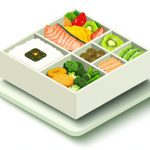We all want to eat healthy, right? But between busy schedules, confusing information, and the expense of good food, it can feel like an uphill battle. This isn’t a lecture; it’s a practical guide to making healthy eating a reality, not just a goal. We’ll break down the common roadblocks—from money woes to time crunches and sneaky habits—and give you simple, doable strategies to overcome them. Think of it as your personal cheat sheet to a healthier, happier you. For more insights on this topic, check out this helpful article: Why is healthy eating hard?.
Simple Solutions to the Barriers of Healthy Eating
Let’s be honest: eating healthy isn’t always a walk in the park. Life throws curveballs, and sometimes those curveballs land right in our grocery carts, leading us to less-than-ideal food choices. But don’t worry, you’re not alone! Many people face hurdles when trying to eat well. Let’s explore these common obstacles and find practical, easy-to-implement solutions to help you get on the path to a healthier diet.
The High Cost of Healthy Food: Making Smart Choices on a Budget
One of the biggest challenges many people face is the price tag associated with healthy eating. Fresh fruits, vegetables, and lean proteins often cost more than processed snacks and meals. This can create a significant barrier, especially for families on a budget. But don’t let this discourage you! There are ways to navigate this challenge. As much as 92% success rate can be achieved by making smart choices on a budget.
Smart Shopping Strategies:
- Become a Coupon Ninja: Clip coupons from newspapers, online, and store flyers. Download store apps for exclusive digital coupons and rewards. Many stores have weekly specials on fresh produce, often advertised online.
- Bulk Up (But Smartly): Buying in bulk can save money on staples like rice, beans, and oats, but only if you’ll actually use them before they expire or go bad. Consider sharing bulk purchases with a friend or neighbor to avoid waste.
- Embrace Frozen Foods: Frozen fruits and vegetables are often just as nutritious as fresh and are usually much cheaper. They also have a longer shelf life, reducing waste. Stock up when they’re on sale.
- Plan Your Meals: A meal plan helps you minimize food waste, sticking to your shopping list and reducing impulse buys. Take inventory of what you already have before you shop to avoid buying duplicates. Use a whiteboard or app to track your meal plan.
- Explore Cheaper Protein Sources: Lentils, beans, eggs, tofu, and canned fish (like tuna or salmon) are all excellent and affordable sources of protein. Experiment with vegetarian recipes to save money on meat.
Time Crunch Solutions: Healthy Eating Fast and Easy
Between work, family, and other commitments, finding the time to shop for, prepare, and cook healthy meals can feel like an impossible task. This time constraint often leads people to rely on convenient, but less healthy, options. However, with a little planning and clever strategies, you can work healthy eating into even the busiest schedule.
Time-Saving Tips:
- Weekend Prep Power: Dedicate an hour or two on the weekend to chop vegetables, cook grains, or marinate proteins for the week. Store prepped ingredients in airtight containers for easy access during the week. This dramatically reduces your weeknight cooking time.
- Embrace the One-Pan/Pot Meal: One-pot meals like stews, soups, stir-fries, or sheet pan dinners are quick to prepare and easy to clean up. Search online for “one-pot recipes” for inspiration.
- Leftovers are Your Friend: Plan your meals so that you have leftovers for lunch the next day – less cooking and less clean-up! Pack leftovers immediately after dinner to avoid the temptation to snack on unhealthy options.
- Utilize Quick-Cooking Methods: Use a pressure cooker or Instant Pot to significantly shorten cooking times for beans, grains, and tough cuts of meat. A microwave can also be a useful tool for steaming vegetables or cooking individual portions.
- Batch Cooking Magic: Spend a larger chunk of time once a week preparing multiple healthy meals and freeze portions for later use. Label each container with the date and contents for easy identification.
Breaking Unhealthy Habits: Routine Transformations
Changing long-standing habits is tough. We all have ingrained eating patterns, some healthy, some not so much. These habits are powerful, and breaking free takes conscious effort and patience. It’s not about perfection; it’s about progress.
Strategies for Habit Change:
- Start Small, Think Big: Don’t try to overhaul your entire diet overnight. Focus on one small, achievable change at a time, like swapping sugary drinks for water, or adding a side salad to your dinner. Once that habit is established, move on to the next.
- Mindful Munching: Pay attention to your hunger and fullness cues. Eat slowly, savor your food, and notice how your body feels. Avoid distractions like TV or your phone while eating. Put your fork down between bites.
- Seek Support: Enlist the help of a friend, family member, or a registered dietitian. Accountability can make a big difference. Join an online support group or find a local weight loss program.
- Don’t Beat Yourself Up: Everyone slips up sometimes. If you have an unhealthy indulgence, don’t dwell on it. Just get back on track with your next meal. Learn from your mistakes and identify what triggered the slip-up.
- Reward Yourself (Healthily): Celebrate your successes with non-food rewards, like a relaxing bath, a new book, a massage, or a fun outing. Avoid rewarding yourself with food, as this can reinforce unhealthy eating habits.
Nutrition Information: Sorting food Fact from Fiction
The internet is awash in conflicting nutrition advice. Fad diets, miracle cures, and misleading claims make it difficult to know what to believe. This misinformation is a major barrier to making informed food choices. How do you cut through the noise?
Tips for Evaluating Nutrition Information:
- Trust Reputable Sources: Look for information from credible organizations like the Academy of Nutrition and Dietetics, the Mayo Clinic, the National Institutes of Health (NIH), or the American Heart Association. Registered dietitians are excellent resources for personalized advice.
- Read Food Labels Carefully: Become familiar with nutrition labels to understand portion sizes, serving sizes, and nutrient content. Pay attention to calories, fat, sugar, sodium, and fiber.
- Be a Skeptical Consumer: If a claim sounds too good to be true, it probably is. Avoid products and diets that promise rapid weight loss without lifestyle changes. Question testimonials and anecdotal evidence.
- Consult a Professional: A registered dietitian can help you create a personalized nutrition plan based on your individual needs and goals. They can also help debunk nutrition myths and provide evidence-based guidance. Look for a registered dietitian (RD or RDN).
Food Choices: Emotional Eating Factor
For many of us, food serves as a comfort mechanism. Emotional eating, using food to cope with stress, sadness, or boredom, can be a significant barrier to healthy eating. It’s crucial to understand and address this aspect of our relationship with food.
Strategies for Managing Emotional Eating:
- Identify Your Triggers: What situations or emotions tend to lead you to overeat? Keeping a food journal can help you uncover patterns. Pay attention to your feelings before, during, and after eating.
- Find Healthy Outlets for Stress: Exercise, meditation, yoga, spending time in nature, listening to music, reading, or engaging in hobbies can be healthy alternatives to emotional eating. Explore different stress-reducing activities to find what works best for you.
- Practice Self-Compassion: Be kind to yourself. Everyone has moments of emotional eating. Focus on moving forward. Forgive yourself and learn from the experience.
- Seek Professional Help: If you’re struggling to manage emotional eating on your own, a therapist or counselor can provide support and guidance. Cognitive behavioral therapy (CBT) can be an effective treatment for emotional eating.
Systemic Changes: A Healthier Food System
While personal changes are essential, addressing barriers to healthy eating also requires a broader perspective. Factors beyond individual control, like access to affordable healthy food and the pervasive marketing of unhealthy products, play a significant role. Policy changes and industry action are crucial for long-term success.
| Stakeholder | Short-Term Actions | Long-Term Actions |
|---|---|---|
| Individuals | Make gradual changes, seek support, practice self-compassion. | Cultivate sustainable healthy habits, learn to manage emotional eating. |
| Healthcare Providers | Educate patients, provide referrals to registered dietitians. | Advocate for policy changes to improve access to healthy food. |
| Policymakers | Increase access to fresh produce through subsidies and incentives, regulate marketing of unhealthy foods to children. | Invest in nutrition education programs for schools and communities, address food deserts by supporting local farmers and grocery stores. |
| Food Industry | Offer more affordable healthy options, improve food labeling and marketing practices to |
- How Glass Bento Box Containers Make Meal Prep Easier - December 18, 2025
- Why Glass Boxes for Lunch Are Trending for Meal Prep - December 17, 2025
- Bento Box Glass Offers Practical, Eco-Friendly Meal Storage - December 16, 2025










